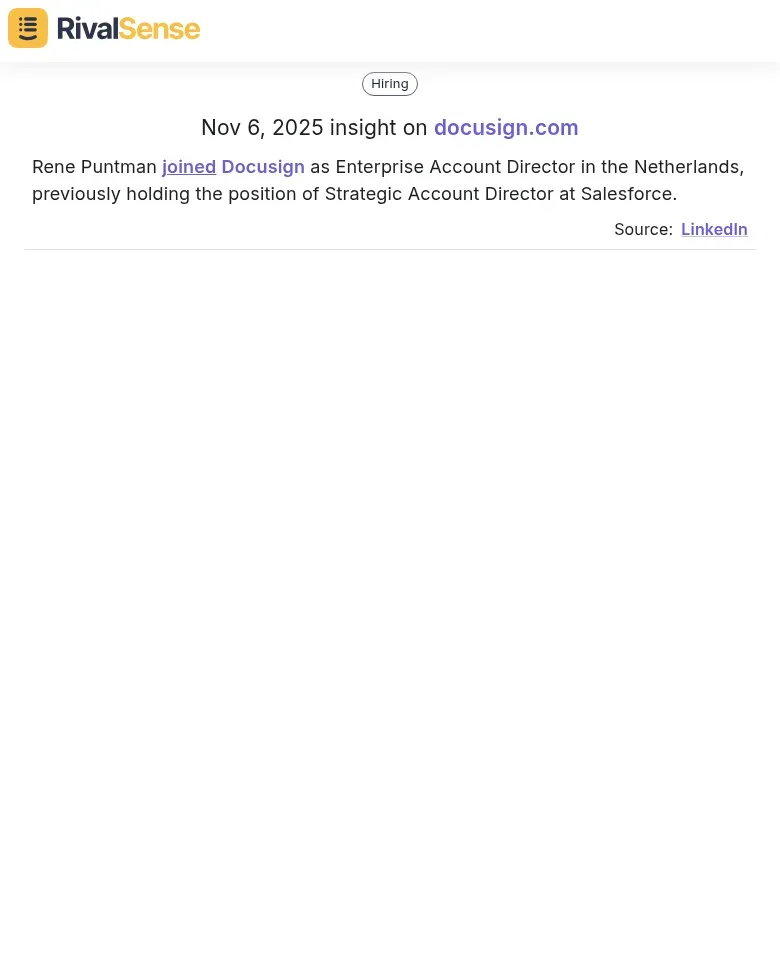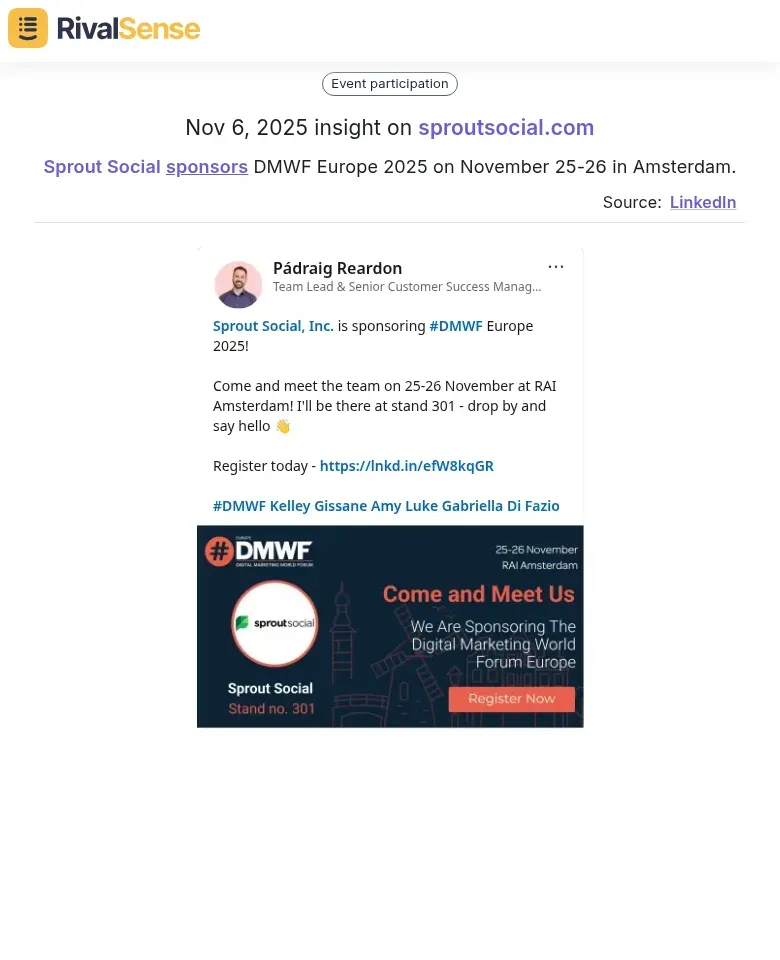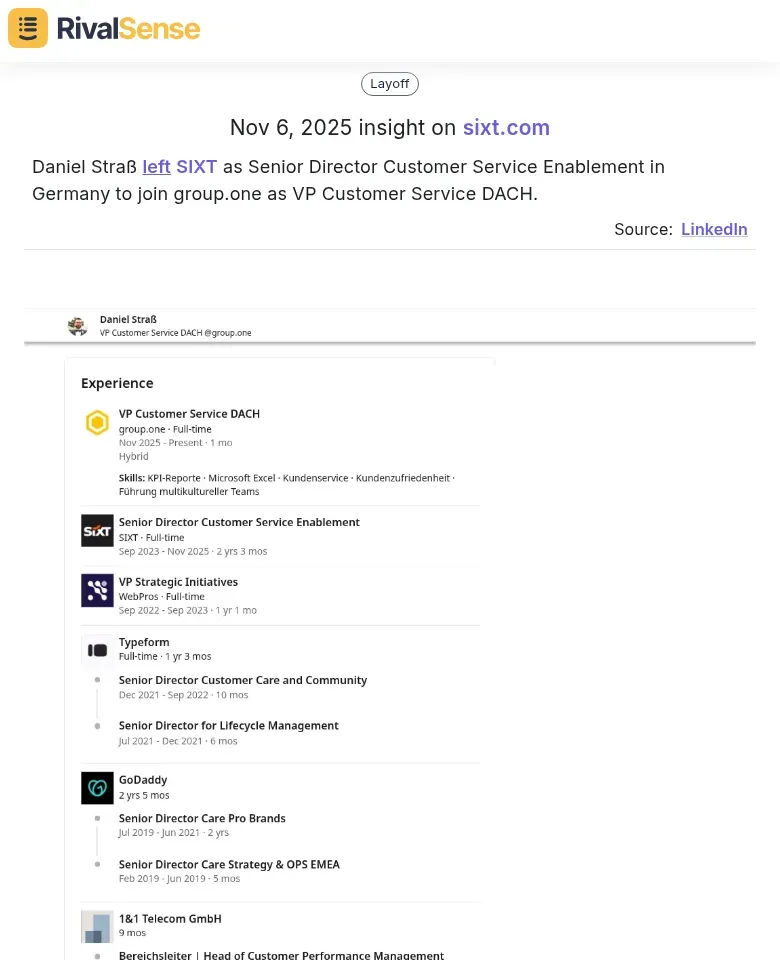HR Consulting's Competitive Edge: Unlocking Growth Through Rival Analysis
The HR consulting market is booming, projected to exceed $50 billion by 2027, yet competition is fiercer than ever. In this crowded landscape, competitor analysis isn't just a nice-to-have—it's a strategic imperative for differentiation and growth. By systematically tracking rivals' service offerings, pricing models, and client acquisition strategies, HR firms can uncover gaps in the market and refine their unique value propositions. For instance, a mid-sized HR consultancy used rival insights to identify an underserved niche in remote-work compliance, pivoting their services to capture 30% market share within a year. Another firm analyzed competitors' digital presence, revamping their content strategy to rank higher in search results and double qualified leads.
To get started, adopt a structured approach:
- ✅ Map key competitors and their core services
- ✅ Monitor their marketing channels (e.g., LinkedIn, webinars)
- ✅ Analyze client testimonials for pain points
- ✅ Benchmark your pricing against industry standards
Tools like RivalSense automate this process, delivering real-time alerts on competitor moves. Embrace rival analysis to not just keep pace, but to lead with confidence and agility.
Identifying Your HR Consulting Competitors: Beyond the Obvious
Understanding who your competitors are is the first step toward gaining a strategic advantage. It's essential to look beyond direct rivals and consider indirect players who might solve similar client problems. By categorizing competitors, you can identify both immediate threats and potential opportunities for collaboration or differentiation.
Direct competitors offer similar HR services (e.g., talent management, compliance) to the same industries, while indirect competitors provide alternatives like HR software or in-house solutions. Use tools like RivalSense to track emerging and niche players by monitoring industry reports, social media, and client reviews.
Practical steps to identify competitors:
- 🎯 Create a checklist: List direct competitors by service overlap, and indirect ones by client problem-solving.
- 🎯 Analyze service portfolios: Compare offerings in areas like recruitment, training, and HR tech.
- 🎯 Evaluate pricing models: Assess hourly rates, retainers, or value-based pricing to spot gaps.
- 🎯 Identify target industries: Focus on sectors like tech or healthcare where competitors thrive.
Tip: Regularly update your analysis to adapt to market shifts and uncover untapped opportunities.
Deep Dive: Analyzing Competitor Strengths and Weaknesses
A thorough analysis of competitor strengths and weaknesses reveals where you can outperform them and capitalize on market gaps. Start by examining their service expertise and client feedback to identify patterns and areas for improvement. This deep dive helps you refine your own strategies and position your firm more effectively.
To analyze HR consulting competitors effectively, begin by mapping their expertise areas through service pages and client testimonials. Look for patterns in case studies—do they specialize in DEI, compliance, or talent acquisition? Assess their marketing strategies by tracking content themes, webinar topics, and social media engagement. A strong digital presence with high-quality blogs or podcasts often signals thought leadership. Use tools like RivalSense to monitor their client reviews for recurring pain points, such as slow response times or lack of customization. Identify service gaps by comparing their offerings to industry demands—e.g., if competitors overlook remote work consulting, that's an opportunity.
Checklist for competitor analysis:
- 🔍 Review 3-5 competitor websites and note unique value propositions
- 🔍 Analyze client feedback for weaknesses and unmet needs
- 🔍 Track content frequency and engagement metrics
- 🔍 Compare service offerings to industry trends
This approach uncovers unmet client needs you can address to gain a competitive edge.
Leveraging Competitive Intelligence for Strategic Growth
Competitive intelligence transforms raw data into actionable strategies that drive business growth. By understanding what competitors are doing—and where they're falling short—you can make informed decisions that enhance your market position. This proactive approach ensures your firm stays ahead in a dynamic industry.
In HR consulting, start by analyzing competitors' service gaps and client complaints to develop unique value propositions. For example, if rivals struggle with remote team management, position your firm as the hybrid workforce specialist. Optimize pricing through competitive benchmarking: map rival pricing tiers against service quality, then position your offerings 10-15% higher for premium value or match pricing while highlighting superior deliverables. Use tiered packages to capture different client segments. Identify underserved markets by tracking where competitors lack presence or expertise. If larger firms ignore small businesses, develop scalable HR solutions for SMBs. If niche players miss compliance services, build specialized compliance advisory.
Practical steps for growth:
- 📈 Conduct quarterly competitor service audits
- 📈 Monitor client reviews for unmet needs and pain points
- 📈 Test price sensitivity with pilot packages and adjust based on feedback
- 📈 Map service gaps in your geographic or industry niche
- 📈 Develop 3-5 unique selling propositions addressing competitor weaknesses
This intelligence-driven approach ensures your growth strategy is both reactive to market gaps and proactive in creating differentiated value.
Tools and Technologies for Effective Competitor Tracking
Leveraging the right tools can streamline competitor analysis and provide real-time insights that inform your strategy. Automated platforms save time and reduce human error, allowing you to focus on strategic decision-making. For HR consulting firms, specialized competitor tracking tools like RivalSense are essential for staying agile and responsive.
These platforms monitor rivals' website changes, service updates, pricing shifts, and marketing campaigns in real-time, alerting you to opportunities and threats. For instance, tracking management changes can reveal shifts in company strategy or expansion plans. Consider this insight: Rene Puntman joined Docusign as Enterprise Account Director in the Netherlands, previously holding a position at Salesforce. This type of intelligence is valuable because it highlights talent movements that could signal new market focuses or competitive hiring strategies, helping you anticipate rival moves.

Practical steps to integrate competitor insights:
- 🛠️ Set up automated alerts for key competitors' website and service updates
- 🛠️ Monitor social media and review platforms for client sentiment and service gaps
- 🛠️ Track competitors' thought leadership content and speaking engagements
- 🛠️ Use competitive pricing intelligence to inform your service packages
Integrate insights into workflows:
- Create a competitor dashboard for weekly team reviews
- Align sales pitches to counter competitor weaknesses
- Identify service gaps to expand your offerings
- Use competitive intelligence in proposal development to highlight differentiators
Checklist for effective tracking:
- ✓ Identify 3-5 key competitors to monitor
- ✓ Set up automated monitoring for their digital footprint
- ✓ Schedule monthly competitive landscape reviews
- ✓ Document competitor strengths and weaknesses
- ✓ Update your value proposition based on competitive gaps
Real-World Competitive Insights in Action
Real-world examples of competitor moves can illustrate how to apply insights to your business strategy. By examining specific events, partnerships, or personnel changes, you can better understand the implications for your own firm. These insights, when tracked consistently, provide a clear picture of the competitive landscape.
For example, Sprout Social sponsoring DMWF Europe 2025 in Amsterdam shows their investment in event marketing and industry presence. This type of insight is valuable because it reveals competitor priorities in networking and brand building, allowing you to assess if you should increase your own event participation or target similar audiences.

Another insight: Daniel Straß left SIXT as Senior Director Customer Service Enablement in Germany to join group.one as VP Customer Service DACH. This highlights talent transitions that can indicate competitive shifts in service focus or regional expansion, helping you adjust your recruitment or service strategies accordingly.

By regularly monitoring such moves, you can stay ahead of trends and make data-driven decisions.
Building a Culture of Continuous Competitive Intelligence
Embedding competitor analysis into your firm's culture ensures that insights drive ongoing improvements and strategic adjustments. It requires clear processes, team involvement, and a commitment to learning from the market. A culture of continuous intelligence fosters agility and long-term competitiveness.
Start by establishing clear processes and responsibilities. Assign a dedicated team member or cross-functional group to monitor rivals weekly using tools like RivalSense, tracking their service launches, pricing changes, and client testimonials. Create a simple dashboard to share insights across departments. Train your teams to spot opportunities: teach consultants to identify gaps in competitors' offerings during client interactions, and empower marketing to highlight your unique value propositions in campaigns. For example, if a rival lacks diversity training services, position yours as a differentiator.
Measure ROI by linking competitor insights to outcomes. Track metrics like increased win rates in competitive bids, client retention improvements after addressing rival weaknesses, and revenue growth from new services inspired by market gaps.
Checklist for building this culture:
- 🌱 Set monthly review meetings to discuss competitor insights
- 🌱 Document competitive wins and lessons learned
- 🌱 Survey clients on why they chose you over others
- 🌱 Encourage cross-department collaboration on intelligence gathering
This ongoing approach turns intelligence into actionable growth, ensuring you stay ahead in a dynamic market.
Ready to transform your competitor analysis? Try RivalSense for free and get your first competitor report today to start uncovering strategic opportunities in your HR consulting business!
📚 Read more
👉 How Databricks' OpenAI Deal Drove Competitors to Accelerate AI
👉 Best Practices: Facebook Competitor Insights for Award Monitoring
👉 Advanced Key Account Health Dashboard Tactics for TV Advertising
👉 Competitor Partnership Tracking Framework: Uncover Promotional Insights
👉 How to Analyze Competitor Promotions for Strategic Advantage
